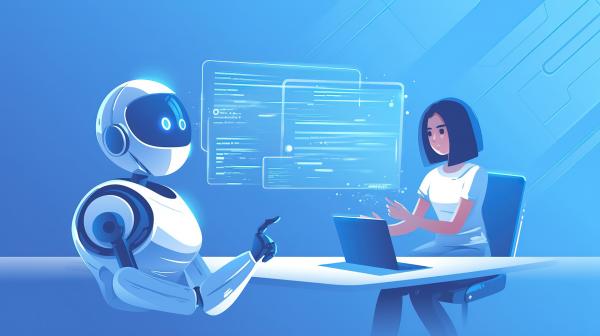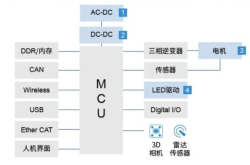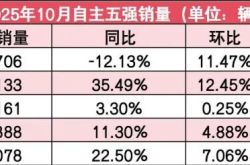Claude 4 Series Models Arrive, Elevating Reasoning Models to a Must-Have
![]() 05/29 2025
05/29 2025
![]() 570
570
Preface: In the midst of fierce competition, the capabilities of top large language models have scaled new heights. In the era of large models, OpenAI has historically anticipated Google's conference announcements by unveiling new products. However, due to OpenAI's inventory constraints and the incomplete GPT-5, Anthropic has stepped into the spotlight.
Author | Fang Wensan
Image Source | Network

Claude 4 Released with Enhanced Reasoning and Coding Capabilities
Recently, AI startup Anthropic officially introduced the Claude 4 series of large models.
Comprising Claude Opus 4 and Claude Sonnet 4, the series sets new benchmarks in coding, advanced reasoning, and AI agent capabilities.
Anthropic claims that Claude Opus 4 is its most powerful AI model to date, capable of handling extended tasks lasting several hours.
In client tests, Opus 4 operated autonomously for up to seven hours, vastly expanding the application scope of AI agents.
According to Anthropic's benchmarks, Opus 4 surpasses Google's Gemini 2.5 Pro, OpenAI's o3 reasoning model, and GPT-4.1 in coding tasks and web search tool utilization.
Claude Opus 4 also leads the coding field, achieving top scores in SWE-bench (72.5%) and Terminal-bench (43.2%) tests.
Claude Sonnet 4 significantly outperforms Sonnet 3.7's industry-leading capabilities, attaining a remarkable 72.7% coding efficiency on SWE-bench.
On the authoritative SWE-bench Verified benchmark, Claude Opus 4 and Claude Sonnet 4 scored 79.4% and 80.2%, respectively.
This surpasses other models like OpenAI Codex-1, OpenAI o3, OpenAI GPT-4.1, and Gemini 2.5 Pro.
In benchmarks focusing on programming, tool usage, visual reasoning, mathematics, and other domains, both models outperform OpenAI o3.
For multilingual Q&A and graduate-level reasoning tasks, Claude Opus 4 scores comparably to OpenAI o3.
According to Amazon Web Services data, within five weeks of its release, Amazon Bedrock customer usage increased by 300% compared to the previous Claude model, exemplified by Claude Sonnet 3.7.
Addressing Long-standing Pain Points as a Core Breakthrough
In boosting productivity, Claude Opus 4 redefines the human-machine collaboration paradigm by deeply analyzing user style characteristics.
The Claude Opus 4 writing assistant has overcome technical barriers: Opus 4's writing output is nearly indistinguishable from personal style and currently handles 90% of my professional writing tasks.
Anthropic addresses long-standing AI user experience issues through a comprehensive approach.
The Claude 4 series models provide instant responses for simple queries and engage deep thinking mode for complex problems, effectively eliminating the latency and stuttering of early reasoning models in handling basic issues.
This dual-mode functionality maintains the instant interaction users expect while unleashing deep analytical capabilities when needed.
The system dynamically allocates computing resources based on task complexity, achieving a balance early reasoning models struggled to attain.
Memory persistence is another major breakthrough for the Claude 4 series.
These models can extract key information from documents, create summary documents, and achieve cross-session knowledge continuation with authorization.
This capability overcomes the long-standing challenge of memory loss that has constrained AI applications, enabling AI to excel in long-term projects requiring contextual connections spanning days or weeks.
This technical implementation mirrors how human experts develop knowledge management systems, where AI automatically organizes information into structured formats for future retrieval.
In this way, the Claude 4 series models continuously deepen their understanding of complex domains over extended interactions.
The Clear Direction of AI Programming Development
On May 3, Apple partnered with Anthropic to co-develop an AI-driven Vibe Coding platform.
On May 6, it was reported that OpenAI plans to acquire AI programming startup Windsurf for $3 billion.
On May 17, OpenAI released Codex, a programming agent capable of automatically generating, debugging, and optimizing code.
On May 20, Meituan announced the upcoming launch of an AI programming tool called [NoCode].
On May 21, Tencent revealed that approximately 85% of programmers are already using Tencent Cloud's code assistant CodeBuddy.
The development of the AI programming industry commenced with the release of GPT-3.5 at the end of 2022, diverging into two main directions:
① Copilot assistants, where humans lead and AI assists, with representative products including Github Copilot, Cursor, Windsurf, Trae, etc.
② Agent intelligences, where AI actively performs tasks while humans act as supervisors, such as Devin.
A review of investment projects over the past six months reveals that nearly 60% are concentrated at the application layer.
Among them, projects in the Agent direction account for nearly 40% and are currently one of the most heatedly discussed in the industry.
The Agent direction can be further subdivided into two categories, one of which focuses on solving programming problems: Coding Agent.
Currently, Agent technology faces challenges in model capability and context collection, while collaborative products like Copilot are easier to pioneer the market.
The Importance of Reasoning Models
By 2025, a significant shift is observed: models will be built based on reasoning abilities rather than pattern recognition.
By simulating human thought processes and engaging in systematic logical deduction before making decisions, these systems fundamentally overthrow the limitations of traditional AI's reliance on data pattern matching.
According to Poe's "Spring 2025 AI Model Usage Trend Report," the usage of reasoning models has surged fivefold in just four months, with their share of all AI interactions jumping from 2% to 10%, marking the industry's transition from the [tool-assisted] era to the [intelligent collaboration] era.
OpenAI's o1 model surpasses human experts in math, programming, and other benchmarks, with its tool integration ecosystem already accessing over 500 third-party applications, enabling a closed loop from data analysis to automated execution.
Google builds a cross-modal understanding system through models like CLIP and DALL-E, leading the industry by 15% in accuracy for tasks such as visual question answering and image-text generation.
Anthropic's Claude 4 series triples efficiency in scenarios like code generation and database management, deeply integrating with platforms like GitHub and Replit, revolutionizing developer productivity.
It is estimated that by 2025, reasoning models will account for 5-10% of enterprise IT budgets, driving the computing economy to exceed $200 billion. From AI chips to edge computing, the entire industry chain is experiencing explosive growth.
With the implementation of benchmark products like OpenAI o1, Google's multimodal system, and Anthropic Claude 4, reasoning models are transitioning from the lab to thousands of industries, ushering in a new era of human-machine collaboration.
In the future, enterprises that leverage reasoning intelligence will establish insurmountable advantages in efficiency, innovation, and competitiveness, a trend that has become irreversible in 2025.
Conclusion:
Anthropic's latest release intensifies competition with OpenAI and Google in the field of top models, offering investors an opportunity to reassess the AI sector's competitive landscape.
For investors, the launch of the Claude 4 series signifies a new era of AI capabilities. Especially in programming, Anthropic claims leadership, which could profoundly impact the software development industry.
As AI competition intensifies, investors must reassess the industry landscape, particularly Anthropic's position relative to competitors like OpenAI and Google.
The Claude 4 series' exceptional performance in coding, reasoning, and agent tasks may provide Anthropic with opportunities to gain more market share and enterprise customers.
References: AI Frontline: "The World's Most Powerful Coding Model Claude 4 is Stunningly Released", Head Tech: "Anthropic Launches the Most Powerful Model Claude 4 Series, [Report] Mode Causes Controversy", Deep Data Cloud: "The Universe's Most Powerful Coding Model Claude 4 is Here, Works Independently for Seven Hours"





